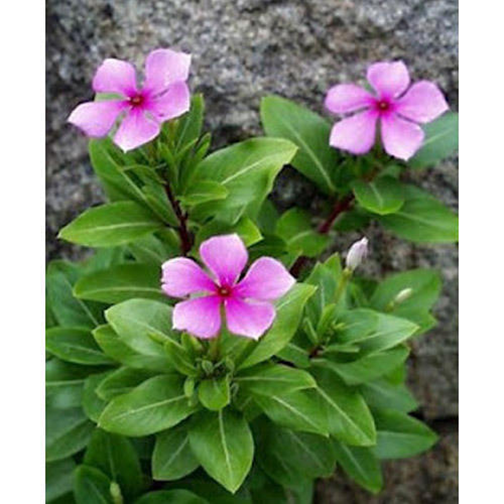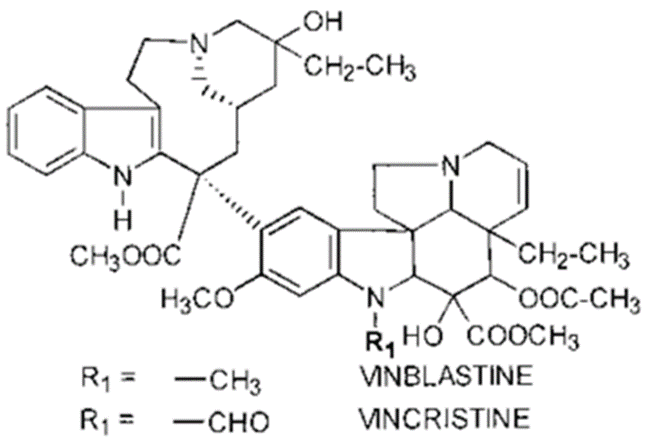Vinca
Source, diagnostic characters, constituents, tests and uses

Objectives
At the end of this lecture, student will be able to
• Discuss the source, diagnostic characters, constituents, tests and uses of Vinca
Vinca
Vinca, commonly referred to as periwinkle, is a genus of flowering plants that belongs to the Apocynaceae family. This versatile plant is cherished for its beauty, medicinal properties, and ecological significance. In this article, we will explore the many facets of Vinca.
Synonym
• Vinca rosea, Periwinkle, Catharanthus
Biological Source
• Dried whole plant of Catharanthus roseus
• Vinca is native to regions in Europe, Asia, and Africa. It thrives in temperate climates and is often found in woodlands, gardens, and along roadsides. Due to its adaptability, it has become naturalized in various parts of the world, making it a globally recognized plant.
Family
• Apocynaceae
Geographical Source of Vinca
• Ornamental plant, US, European and Asian countries
• Indigenous to Madagasgar
Physical Characteristics
Vinca can be identified by its evergreen leaves, which are glossy and dark green. The plant produces vibrant, five-petaled flowers that come in shades of pink, purple, and white. Its stem is slender, and it grows as a low-lying ground cover.
Floral Features
The flowers of Vinca have a characteristic radial symmetry, with a central corolla and a prominent circular pattern. These distinctive floral features make Vinca easily recognizable.
Macroscopy
• Erect, pubescent herb with branched taproot
• Colour – Leaves – green, roots pale grey, flowers – violet, pink white or carmine red
• Leaves – simple, petiolate, ovate – oblong, entire, acute apex
• Flowers – bractate, hermaphrodite, 2-3 cymose axillary cluster
• Fruits – follicle
• Odour – Characteristics
• Taste – Bitter
Microscopy of Vinca
Vinca – Powder characters
Organoleptic characters: Taste, Colour, odour, taste
Active Constituents of Vinca:
• Large number of alkaloids are present
• 20 dimeric indole – dihydroindole alkaloids – Vincristine, vinblastine – Oncolytic activity
• Other alkaloids – ajmalicine, serpentine, lochnerine, tetrahydroalstonine
Chemical tests of Vinca:
• General chemical tests for alkaloids
• Dragendroff’s test
• Mayer’s test
• Wagner’s test
• Hager’s test
Uses of Vinca:
| Vincristine | Vinblastine |
| Acute leukemia in children | Hodgkin’s disease |
| Wilm’s tumor | Choriocarcinoma |
| Cancer of mammary glands | Cancer of mammary glands |
| Cervical cancer | Lymphocytic lymphoma |
| Rhabdomyosarcoma | Advanced testicular cancer |
| Neuroblastoma | Kaposis’s sarcoma |
| Lung cancer | |
| Reticulum cell sarcoma |
Substitutes
• C. ovalis
• C. longifolius
• C. pussilus
Frequently Asked Questions (FAQs)
- Is Vinca the same as periwinkle?
- Yes, Vinca is commonly known as periwinkle.
- What are the primary medicinal constituents of Vinca?
- The primary medicinal constituents of Vinca are alkaloids, specifically vincristine and vinblastine.
- How is Vinca used in landscaping?
- Vinca is often used in landscaping as a ground cover and in hanging baskets due to its colorful flowers and low maintenance requirements.
- What are the environmental benefits of Vinca?
- Vinca helps stabilize soil and provides nectar for pollinators, contributing to biodiversity.
- What are some other common names for Vinca?
- Vinca is also commonly referred to as “periwinkle,” “myrtle,” and “creeping myrtle” in various regions.
- Can Vinca be grown indoors?
- Yes, Vinca can be grown indoors as a potted plant. It thrives in well-draining soil and requires moderate sunlight.
- Are there any side effects associated with using Vinca for medicinal purposes?
- While Vinca alkaloids have significant medicinal benefits, they can have side effects. It’s essential to use them under medical supervision to manage potential adverse reactions.
- Are all species of Vinca used for medicinal purposes?
- No, not all Vinca species are used for medicinal purposes. The most commonly utilized species are Vinca minor and Vinca major.
- What are the different colors of Vinca flowers available?
- Vinca flowers come in a range of colors, including white, pink, purple, and lavender, providing various options for landscaping and ornamental purposes.
Also, Visit: B. Pharmacy Notes | B. Pharma Notes | Study material Bachelor of Pharmacy



